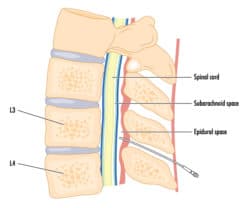OB-GYN ANNUAL HEALTH EXAMS, Michael Silverstein, MD (Video)
As a general OB-GYN, Dr. Michael Silverstein sees many patients for their annual health exam. Many of these patients are adolescents starting in college or have just finished college and are starting relationships. In general, the annual health exam is a routine physical exam. At MFM we offer counseling and discuss health maintenance issues. We
WHAT PRENATAL LAB TESTS SHOULD I HAVE DONE?, Michael Silverstein, MD (Digital)

If you are pregnant, you may be wondering what tests you should have performed in order to properly monitor and manage your pregnancy. As with many obstetrical care groups, our practice recommends several tests to assess maternal well-being during pregnancy; these include: Blood type and antibody screen: This assesses antigens on your red blood cells,
INDICATION OF OPERATIVE VAGINVAL DELIVERY, Michael Silverstein, MD (Digital)

When spontaneous vaginal delivery is not an option, your Doctor may suggest that your delivery be completed using a technique called operative vaginal delivery. Operative vaginal delivery includes the use of forceps or vacuum to assist in the delivery of a baby. The use of forceps or vacuum is reasonable when an operative intervention to
HEALTH SCREENING FOR MAINTAINING REPRODUCTIVE HEALTH, Michael Silverstein, MD (Digital)

Many women rely on their gynecologist for general health care. We appreciate the confidence you have in us, and since we were trained in an era of being General Providers, there are guidelines for prevention and treatment. Keep reading to learn more about the different types of preventative care offered by gynecologists to help patients
UNDERSTANDING “THE PILL,” Michael Silverstein, MD (Digital)

While oral contraceptives have been around for many years, a number of economic, technological, and social obstacles had to be overcome before it would become available to patients. Present day, oral contraceptives are widely used and accepted as one of the most effective methods of birth control when used properly. Many patients think of their
PAIN RELIEF ON LABOR AND DELIVERY: LOCAL ANESTHESIA, SEDATION, AND GENERAL ANESTHESIA, Michael Silverstein, MD (Digital)

The five most commonly used methods of pain relief used in labor and delivery are epidural, spinal, local anesthesia, IV sedation, and general anesthesia. Being informed about different forms of anesthesia will help prevent expectant mothers from being caught off guard in the event that it may be necessary. Read on to learn more about
PAIN RELIEF OF LABOR AND DELIVERY, Michael Silverstein, MD (Digital)

There are five methods most commonly used as methods of pain relief used on labor and delivery. These include epidural, spinal and local anesthesia, IV sedation, and general anesthesia. Today we will discuss spinal anesthesia. What is Spinal Anesthesia? Anatomically, the path between the skin of the back and the spinal cord crosses skin, subcutaneous tissue,
PAIN RELIEF ON LABOR AND DELIVER: EPIDURAL, Michael Silverstein, MD (Digital)

The five most commonly used methods of pain relief used during labor and delivery are spinal anesthesia, epidurals, local anesthesia, IV sedation, and general anesthesia. Today we will discuss epidural anesthesia. What is Epidural Anesthesia? Epidural anesthesia is the most popular type of pain relief used during labor. In fact, 60-90% of women who give







